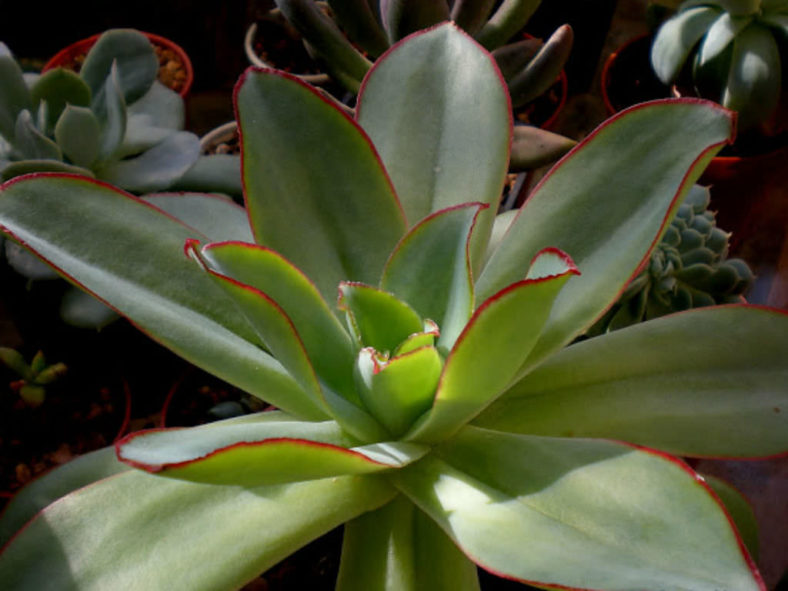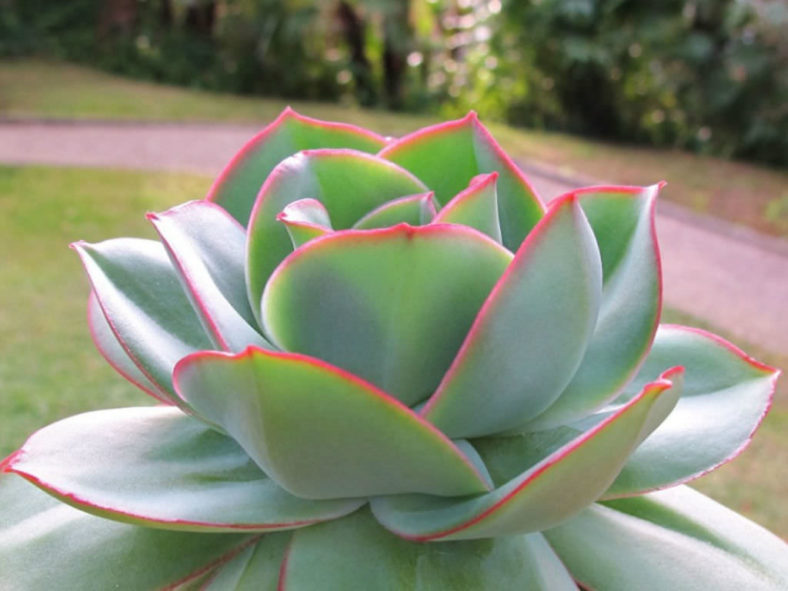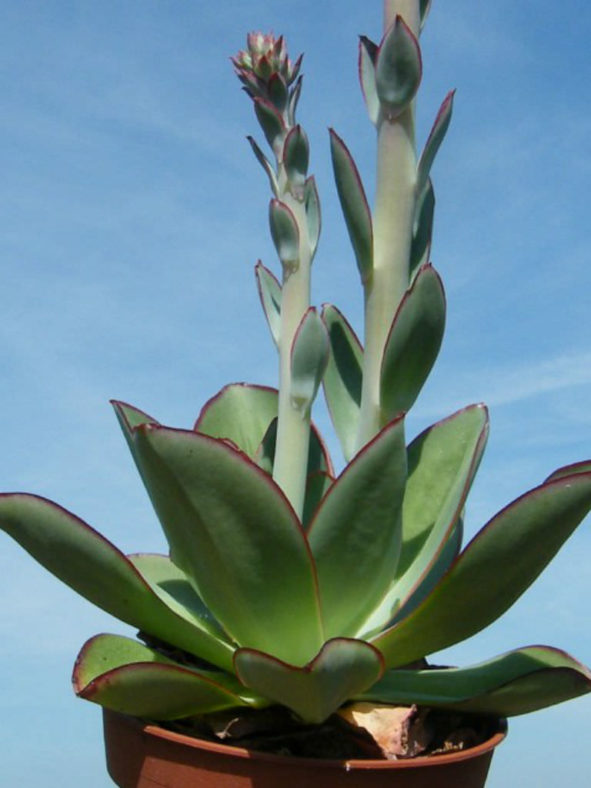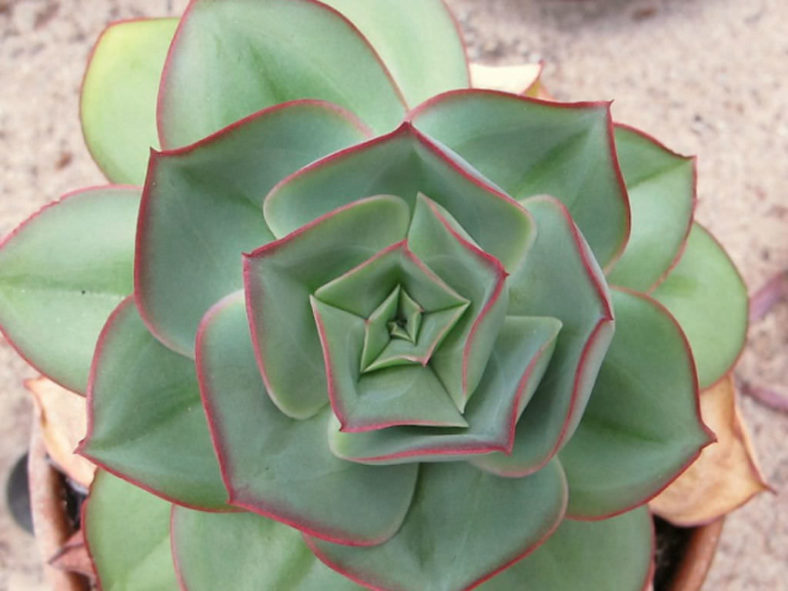Scientific Name
Echeveria subrigida (Robins. & Seaton) Rose ex Britton & Rose
Synonym(s)
Cotyledon subrigida, Cotyledon subrigidum, Echeveria angusta, Echeveria palmeri, Echeveria rosei
Scientific Classification
Family: Crassulaceae
Subfamily: Sempervivoideae
Tribe: Sedeae
Genus: Echeveria
Etymology
The specific epithet "subrigida" (pronounced "sub-RIG-id-uh") means "somewhat rigid" and refers to the branches of the inflorescence of this species.
Origin
Echeveria subrigida is native to Mexico (San Luis Potosí, Guanajuato, Querétaro, Hidalgo, Mexico, and Michoacán).
Description
Echeveria subrigida is a beautiful succulent that forms rosettes of blue-green leaves highlighted with a thin, pink or rose border. The rosettes can reach a diameter of 18 inches (45 cm). The leaves are spade-shaped and can grow up to 4 inches (10 cm) long and two-thirds as broad. They are covered with a light bluish bloom.
In late spring into mid-summer, slender spikes rise from the center of each rosette, producing cymes of milky-blue buds that gradually age to tubular, coral-pink flowers. The flower stalks have short, somewhat rigid branches and can grow up to 12 inches (30 cm) tall. Orange tones inside add to the charm of these flowers that can measure up to one inch (2.5 cm) in length.

Cultivars of Echeveria subrigida
How to Grow and Care for Echeveria subrigida
Hardiness: USDA hardiness zones 9a to 11b: from 20°F (-6.7°C) to 50°F (10°C).
Most common Echeveria species are not complicated succulents to grow, provided you follow a few basic rules. First, never let water sit in the rosette, as it can cause rot or fungal diseases that will kill the plant. Additionally, remove dead leaves from the bottom of the plant as it grows. These dead leaves provide a haven for pests, and Echeverias are susceptible to mealybugs. Finally, as with all succulents, maintaining careful watering habits and providing ample light will help ensure success.
Repot as needed, preferably during the warm season. To repot a succulent, ensure the soil is dry before repotting, then gently remove the pot. Knock away the old soil from the roots, removing any rotted or dead roots. Treat any cuts with a fungicide.
Most Echeverias can be easily propagated from leaf cuttings, although a few are better propagated from seeds or stem cuttings. To propagate a leaf cutting, place the individual leaf in potting soil for succulents and cover the dish until the new plant sprouts.
Learn more at How to Grow and Care for Echeveria.
Links
- Back to genus Echeveria
- Succupedia: Browse succulents by Scientific Name, Common Name, Genus, Family, USDA Hardiness Zone, Origin, or cacti by Genus
Photo Gallery
Click on a photo to see a larger version.


